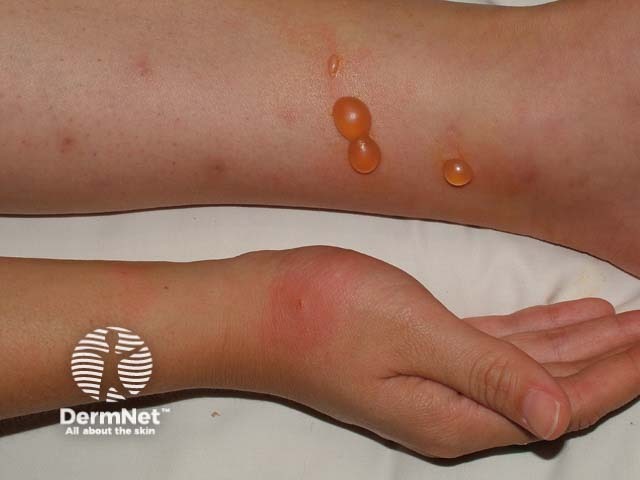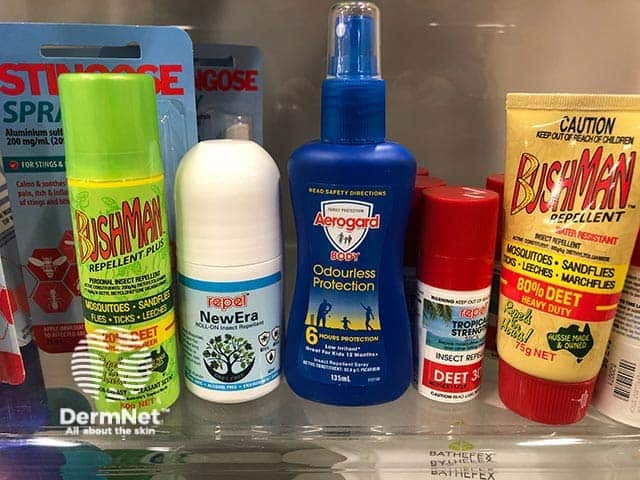Main menu
Common skin conditions

NEWS
Join DermNet PRO
Read more
Quick links
Author(s): Dr Anwen Maddock, Medical Registrar, Christchurch; and Honorary Associate Professor Paul Jarrett, Dermatologist, Middlemore Hospital and The University of Auckland, New Zealand (2023).
Previous contributors: Vanessa Ngan (2008)
Reviewing dermatologist: Dr Ian Coulson
Edited by the DermNet content department
Introduction
Uses
How they work
Chemical insect repellents
Plant-derived insect repellents
Benefits
Disadvantages
Side effects and risks
Precautions and contraindications
Insect repellents are agents used to deter insect bites and stings to reduce the risk of local and systemic effects, including insect-borne diseases.

A bullous insect bite reaction - what we are trying to prevent!

A selection of repellents available from a New Zealand pharmacy
Insect repellent (also known as ‘bug spray’) aims to reduce the risk of local cutaneous reactions from insect bites (eg, mosquito bites) and prevent serious insect-borne diseases including malaria, zika virus, West Nile virus, dengue fever, yellow fever, and chikungunya fever. Lyme disease is spread via bites from infected ticks.
Most insect repellents work on the principle of creating a vapour barrier that deters the insect from coming into contact with the skin.
Some insect repellents can be applied to fabrics or to surrounding environmental structures; others should be applied directly onto the skin.
An ideal insect repellent should be (although to date no repellents meet all of these criteria):
Insect repellents should be used in combination with physical controls such as suitable clothing, mosquito nets, and removal of environmental debris which could be used as breeding areas.
There are 2 types of insect repellents: chemical, or plant-derived.
Although some plant-based repellents have shown effective repellent activity, to date none demonstrate the broad effectiveness and duration of protection of DEET and are therefore not recommended in moderate or high-risk situations.